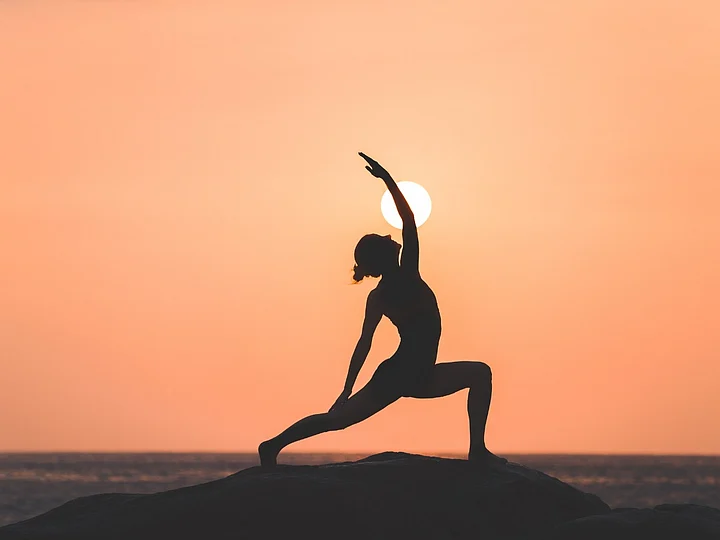Digestion is a process in which the body breaks down nutrients and gets rid of the toxins or waste produced as a by-product. Sometimes, the food doesn't get broken down as it should creating several problems like gas, bloating, discomfort, and difference in stool type and frequency.
Even our gut reacts to psychological and physical stress with symptoms such as stomach aches, diarrhea, constipation, nausea, and changes in appetite and digestion. Winter is one of the seasons in which indigestion is quite common. The reasons may be a lack of physical exercise and a poor diet.
So, there are several ways to manage the problem of indigestion in winter- switch to a healthy diet, stay active, and include foods that are less disturbing for your gut. Here are a few yoga poses that can help you stay active besides helping improve digestion in winter.
1. Bow Pose
This is an easy and quite effective pose that strengthens the abdominal muscles. According to the Yoga Institute, it is an effective pose for people who experience gas and digestive problems as it puts pressure on the abdomen. It is one of the advanced poses to keep the gut healthy, so do not push your body too hard.
Lie flat on your stomach, and use a soft surface or a yoga mat.
Bend your knees slowly.
Slowly extend your arms backward and try to clasp the ankles.
Now gently raise the chest off the floor, as far as you can go.
While using the tension between the arms and legs, lift the thighs and upper body off the floor.
Hold the pose for a few seconds, then release it.
2. Child's Pose
The child's pose may be helpful for your hips and back, relaxing them and allowing them to stretch. In this pose, you will have to kneel and sit on your knees.
Lean forward while keeping your buttocks on your heels, and rest your forehead on the floor. Place your arms next to your legs, palms facing up. Try to inhale and exhale slowly and deeply. Complete at least eight breaths.
If you find it difficult to rest your forehead on the floor, give this a try. Kneel and sit on your knees with your knees slightly apart. Lean forward and fold your arms in front of you on the floor. Now rest your forehead on your arms and continue inhaling and exhaling.
3. Standing Forward Bend
This is one of the traditional yoga poses in which you bend forward. It can be restful and rejuvenating. This pose can help relieve back pain and sciatica. It helps manage imbalances and improves strength.
The pose focuses on muscles like hamstrings, deltoids, gluteus maximus, triceps, and quadriceps. You should:
Get on all fours.
Your hands should be aligned under your wrists and your knees under your hips.
Press into your hands, tuck your toes, and lift up your knees.
Move your sitting bones slowly up toward the ceiling.
Slightly bend your knees and lengthen your spine and tailbone.
Your heels should be slightly off the ground.
Press firmly into your hands and distribute the weight on both sides of the body.
Pay attention to the position of your hips and shoulders.
Your head should be in line with your upper arms and your chin tucked in slightly.
Hold this pose for at least 1 minute.
4. Cobra Pose
This stretches your abdomen, chest, and shoulders. It strengthens your spine and may soothe sciatica. It helps the muscle groups: hamstrings, gluteus maximus, deltoids, triceps, and serratus anterior.
Follow the steps:
Lie on your stomach and place your hands under your shoulders and your fingers facing forward.
Draw your arms to your chest and your elbows should not go out to the side.
Press into your hands and slowly lift your head, chest, and shoulders.
Lift partway, halfway, or all the way up.
Slightly bend your elbows.
Let your head drop back to deepen the pose.
Release back down to your mat and breathe out.
Bring your arms by your side and rest your head.
Slowly move your hips from side to side to release tension from your lower back.
5. Sphinx Pose
This gentle backbend pose strengthens the spine and buttocks. It helps relax your chest, shoulders, and abdomen.
It helps manage stress and focuses on muscles like erector spinal, gluteal muscles, pectoralis major, trapezius, and latissimus dorsi.
Follow the steps here:
Lie on your stomach and extend your legs behind you.
Make sure the muscles of your lower back, buttocks, and thighs are well-engaged.
Place your elbows under your shoulders and your forearms on the floor and your palms facing down.
Now gently lift up your upper torso and head.
Slowly lift and engage your lower abdominals to provide support to your back.
Lift up through your spine and out through the crown of your head, do not collapse on your lower back.
Relax in this pose fully, while you remain active and engaged.
Hold this pose for up to 5 minutes.
(At The Quint, we question everything. Play an active role in shaping our journalism by becoming a member today.)
